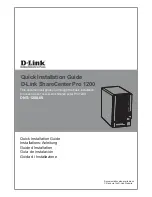
20: Configuring OSPF (Open Shortest Path First)
_______________________________________________________________________________________________________
_______________________________________________________________________________________________________
© Virtual Access 2018
GW6600 Series User manual
Issue: 1.7
Page 200 of 519
Non-broadcast Multi-
access Network (NBMA)
Indicates a topology where one interface can connect to multiple destinations;
however, broadcasts cannot be sent across a NBMA network. For example,
Frame Relay. OSPF characteristics are:
OSPF will elect DRs and BDRs.
OSPF neighbours must be manually defined, so all OSPF traffic is unicast
instead of multicast.
Note: on non-broadcast networks, neighbours must be manually specified, as
multicast Hello’s are not allowed
Table 75: OSPF functionality over different topology types
20.1.6
The OSPF hierarchy
OSPF is a hierarchical system that separates an autonomous system into individual
areas. OSPF traffic can either be:
•
intra-area (within one area),
•
inter-area (between separate areas), or
•
external (from another AS).
OSPF routers build a topology database of all links within their area, and all routers
within an area will have an identical topology database. Routing updates between these
routers will only contain information about links local to their area. Limiting the topology
database to include only the local area conserves bandwidth and reduces CPU loads.
Area 0 is required for OSPF to function, and is considered the backbone area. As a rule,
all other areas must have a connection into area 0, though this rule can be bypassed
using virtual links. Area 0 is often referred to as the transit area to connect all other
areas.
OSPF routers can belong to multiple areas, and therefore contain separate topology
databases or each area. These routers are known as Area Border Routers (ABRs).
Figure 110: OSPF hierarchy
In the above example three areas exist: Area 0, Area 1, and Area 2.
Area 0 is the backbone area for this autonomous system.
















































